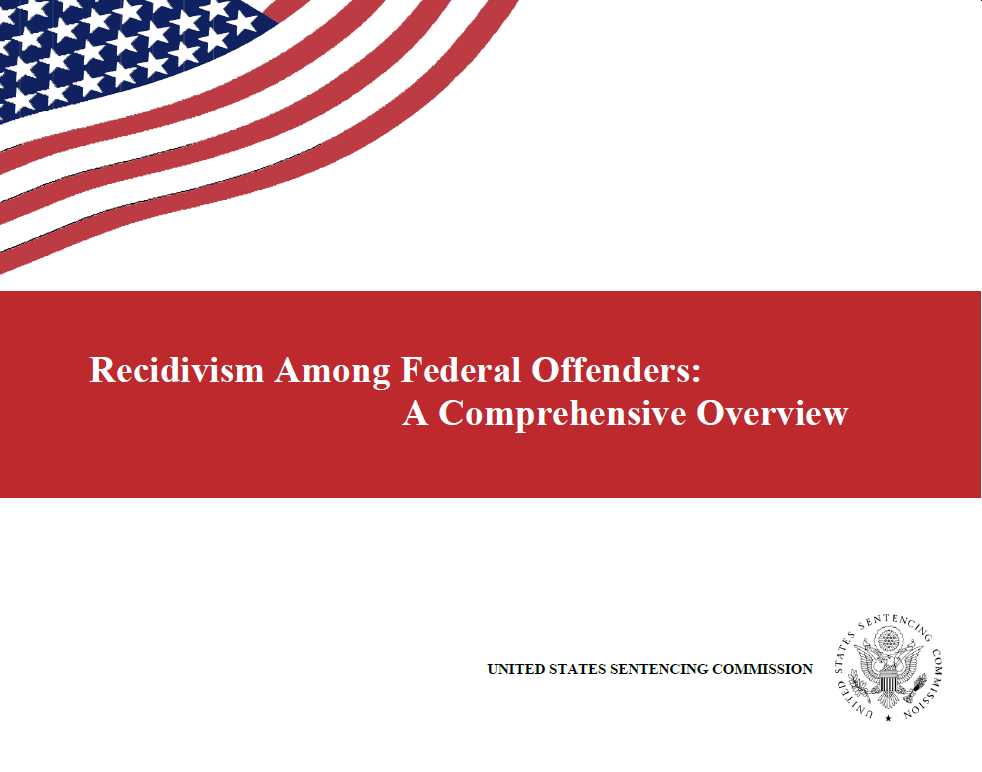Summary
 This report provides a broad overview of key findings from the United States Sentencing Commission’s study of recidivism of federal offenders. The Commission studied offenders who were either released from federal prison after serving a sentence of imprisonment or placed on a term of probation in 2005. Nearly half (49.3%) of such offenders were rearrested within eight years for either a new crime or for some other violation of the condition of their probation or release conditions. This report discusses the Commission’s recidivism research project and provides many additional findings from that project. In the future, the Commission will release additional publications discussing specific topics concerning recidivism of federal offenders. (March 2016)
This report provides a broad overview of key findings from the United States Sentencing Commission’s study of recidivism of federal offenders. The Commission studied offenders who were either released from federal prison after serving a sentence of imprisonment or placed on a term of probation in 2005. Nearly half (49.3%) of such offenders were rearrested within eight years for either a new crime or for some other violation of the condition of their probation or release conditions. This report discusses the Commission’s recidivism research project and provides many additional findings from that project. In the future, the Commission will release additional publications discussing specific topics concerning recidivism of federal offenders. (March 2016)
The offenders studied in this project are 25,431 federal offenders who:
-
are citizens;
-
re-entered the community during 2005 after discharging their sentence of incarceration or by commencing a term of probation in 2005;
-
have valid FBI numbers which could be located in criminal history repositories (in at least one state, the District of Columbia, or federal records);
- are not reported dead, escaped, or detained, and
-
have a pre-sentence investigation report that was submitted to the Commission with a federal sentence that was not vacated.
Key Findings
The key findings of the Commission’s study are:
- Over an eight year follow-up period, almost one-half of federal offenders released in 2005 (49.3%) were rearrested for a new crime or rearrested for a violation of supervision conditions.
- Almost one-third (31.7%) of the offenders were also reconvicted, and one-quarter (24.6%) of the offenders were reincarcerated over the same study period.
- Offenders released from incarceration in 2005 had a rearrest rate of 52.5 percent, while offenders released directly to a probationary sentence had a rearrest rate of 35.1 percent.
- Of those offenders who recidivated, most did so within the first two years of the eight year follow-up period. The median time to rearrest was 21 months.
- About one-fourth of those rearrested had an assault rearrest as their most serious charge over the study period. Other common most serious offenses were drug trafficking, larceny, and public order offenses.
- A federal offender’s criminal history was closely correlated with recidivism rates. Rearrest rates range from 30.2 percent for offenders with zero total criminal history points to 80.1 percent of offenders in the highest Criminal History Category, VI. Each additional criminal history point was generally associated with a greater likelihood of recidivism.
- A federal offender’s age at time of release into the community was also closely associated with differences in recidivism rates. Offenders released prior to age 21 had the highest rearrest rate, 67.6 percent, while offenders over sixty years old at the time of release had a recidivism rate of 16.0 percent
- with the exception of very short sentences (less than 6 months), the rate of recidivism varies very little by length of prison sentence imposed (fluctuating between 50.8% for sentences between 6 months to 2 years, to a high of 55.5% for sentences between 5 to 9 years).
- Other factors, including offense type and educational level, were associated with differing rates of recidivism but less so than age and criminal history.
